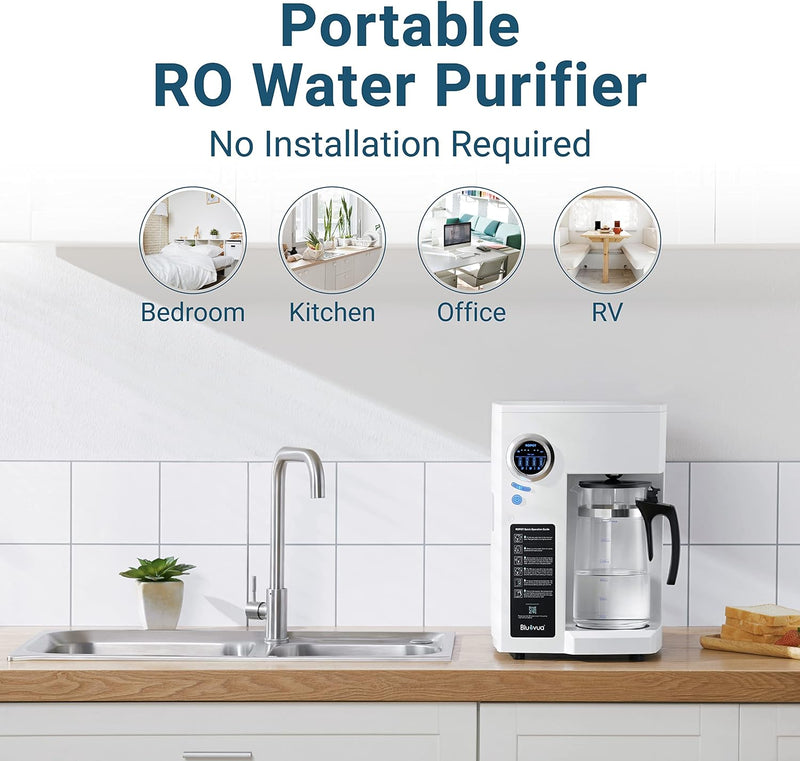Unlock the Secrets of Pure Water: Discover the Magic of Reverse Osmosis Systems!
In an age where water quality is a growing concern, the significance of reverse osmosis (RO) systems cannot be overstated. As we become more aware of contaminants lurking in our water supply, the need for effective filtration solutions has surged. Reverse osmosis presents a powerful method for ensuring that the water we consume is not just clean but also tastes great. This article aims to delve into the world of RO water systems, exploring their benefits, how they function, and the various models available on the market today. Whether you're considering an upgrade for your home or simply curious about the technology behind pure water, this guide is tailored for you.

Understanding Reverse Osmosis Systems
Reverse osmosis is a water purification technology that utilizes a semi-permeable membrane to remove impurities from water. Unlike traditional filtration methods that simply trap contaminants, RO systems operate on the principle of osmosis and its reverse process. In osmosis, water moves through a membrane from an area of lower solute concentration to an area of higher solute concentration. Reverse osmosis flips this process on its head, applying pressure to the water to push it through the membrane, leaving contaminants behind. This process is highly effective, capable of removing up to 99% of dissolved salts, bacteria, and other impurities, providing a level of purity that other methods struggle to achieve.
Benefits of Reverse Osmosis Water Systems
The advantages of using RO systems are numerous and impactful. Firstly, the taste and odor of water significantly improve, making it more palatable for everyday consumption and cooking. Many individuals, including my friend Sarah, have shared how switching to RO water transformed their drinking habits; they now enjoy water without the metallic taste often associated with tap water. Secondly, RO systems are incredibly effective at removing harmful contaminants such as lead, chlorine, and pesticides, ensuring that your drinking water is safe. Moreover, these systems are convenient and cost-effective. Instead of constantly purchasing bottled water, which can be expensive and environmentally unfriendly, an RO system provides a continuous supply of filtered water right at home.
How Reverse Osmosis Systems Work
The operation of an RO system involves several stages of filtration that work together to produce clean water. Initially, pre-filtration occurs, where larger sediments and chlorine are removed to protect the RO membrane. The heart of the system is the reverse osmosis stage, where water is forced through the semi-permeable membrane. This membrane is crucial; it allows water molecules to pass but blocks larger impurities. After the RO process, post-filtration occurs to polish the water, ensuring any remaining tastes or odors are eliminated. Key components of these systems include the membranes, filters, and storage tanks, which collectively ensure that your water is not only clean but also readily available whenever you need it.
Types of Reverse Osmosis Systems
When it comes to selecting a reverse osmosis system, various models cater to different needs and preferences. Under-sink units are popular for their space-saving design, fitting neatly beneath your kitchen sink, while providing a dedicated faucet for RO water. Countertop models, on the other hand, offer portability and ease of use, perfect for renters or those who want a temporary solution. Whole-house systems are designed for those who desire comprehensive filtration throughout their entire home, ensuring that all water sources, including showers and appliances, benefit from purified water. Each model comes with specific features tailored to various requirements, so it's essential to evaluate your needs before making a decision.
Maintenance and Care for RO Systems
Additionally, regular maintenance is essential. Checking for leaks, cleaning, and performing periodic checks can significantly enhance the performance and longevity of your reverse osmosis system. Depending on the usage, you may need to replace filters and membranes every six to twelve months to ensure the peak performance of the system. Neglected systems can lead to diminished water quality and potential issues. It's vital to keep your RO system functioning optimally to enjoy clean water consistently.
Ensuring Access to Clean Water through RO Systems
In summary, reverse osmosis systems are an effective solution for achieving pure and safe drinking water. We explored the benefits, the intricate workings, and the various models available, highlighting how these systems can significantly enhance your water quality. As concerns about water safety continue to grow, it's crucial for individuals and families to consider their specific needs and explore the options that RO systems provide. By investing in a reliable reverse osmosis system, you can ensure that the water you drink is not only clean but also contributes to your overall health and well-being.







Comentarios